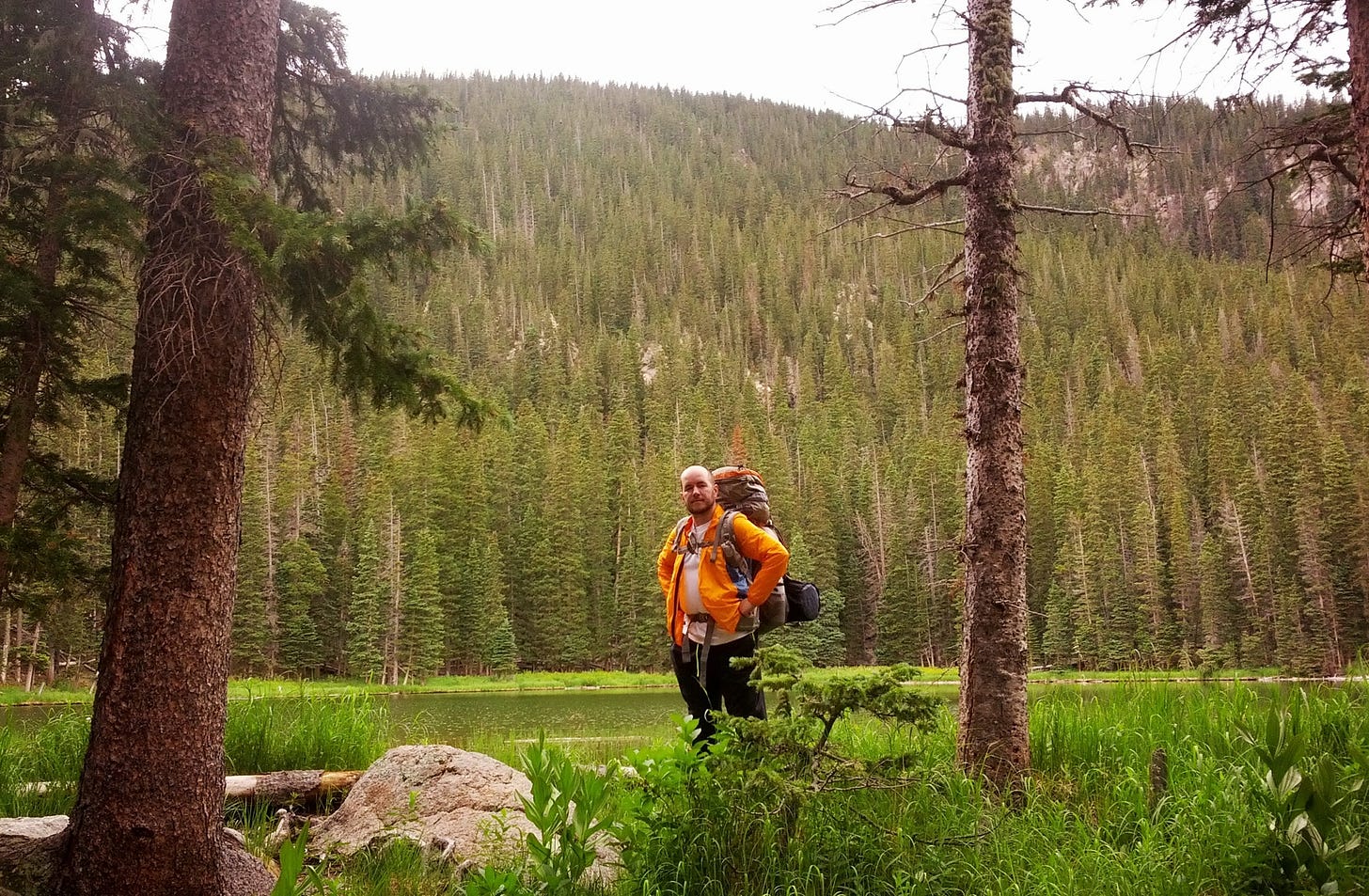Several years ago, I went backpacking in the mountains of Santa Fe, New Mexico.
This was only the second backpacking trip I had taken, and the first time going with just one other person, my friend Jon.
Aside from being afraid of being eaten by bears every night (spoiler alert: there were no bears), it was a successful trip and one that taught me the map and the trail are not the same thing. It was harder than I expected, and more beautiful than I expected. I didn’t get to the peak of Mt. Baldy like I expected (oxygen!), but we also found an amazing clearing to camp next to one night (the views!). The refreshing spring water was delicious and the satisfaction of carrying everything I needed on my back was empowering.
There’s a famous saying from philosopher Alfred Korzybski: “The map is not the territory.”
A map is a static, simplified representation. The territory is the living, breathing, complex reality of the journey itself—the unexpected storm, the washed-out trail, the surprising moment of beauty you could never have planned for.
This is true in the mountains, and it’s true in life. So much of our stress and anxiety comes from staring at our map—our plans, our expectations, our ideas of how things should go—and getting frustrated when the territory doesn’t match. Maps are helpful, but they are not the embodied experience of walking the trail.
So how do we learn to navigate the territory of our lives with more skill, grounding, resilience, and fulfillment?
Consider the term “wayfinder.” A wayfinder is someone who understands the map is just a guide. They are active, present navigators of their own lives, skilled at reading the terrain as they go and finding possibility in an unknown future. They blend together knowledge, experience, and belief. Instead of relying on a single source of guidance, they orient themselves in all the available ways that help navigate from place to place.
This is the work of resilience. It isn’t about simply being tough or powering through; it’s a set of skills we can learn and practice from a place of groundedness, authenticity, and calm. It’s a way of being that allows us to be whole.
There are six core practices of resilient people:
Seeing Reality Clearly. Resilience starts with an honest, clear-eyed view of the territory. It’s the courage to acknowledge what is, without sugarcoating or catastrophizing.
Cultivating Self-Compassion. The journey is hard, and you will stumble. Self-compassion is the practice of treating yourself with the same kindness you would offer a good friend. A lack of self-compassion is like adding weight to your pack, which makes the journey harder than it needs to be.
Taking Time for Rest and Recovery. “Nothing operates at one hundred percent, 100% of the time,” the filmmaker Ryan Baron reminds us. The resilient know that intentional rest isn’t a luxury; it’s a non-negotiable part of the journey. It's how we replenish our energy and maintain a clear perspective.
Infusing Meaning into Experiences. Wayfinders are skilled at finding purpose in the journey, especially in the difficult parts. It’s not about silver-lining things or the belief that “everything happens for a reason.” Resilience asks, “What am I learning from this?” or “How is this experience shaping me to become more of who I want to be?”
Practicing Grounded Optimism. Resilience is absolutely not blind positivity. It’s the deep conviction that, no matter how challenging the territory seems, there is always a path forward. It’s the skill of actively looking for possibilities.
Fostering Meaningful Relationships. No one travels alone. We need each other, and we are at our most resilient when we are in community, when we have sturdy connections.
The work is to show up and practice these skills, mindfully and consistently, especially when it’s easier to give up and make camp in a place called Stuck.
This is how we learn to navigate the territory of our lives with a little more grounding, with a more honest look at where we are and where we want to be. Of who we want to be.
This is the work of a Wayfinder. I've been thinking a lot about what it looks like to practice these skills in community.
More to come on Wednesday…




